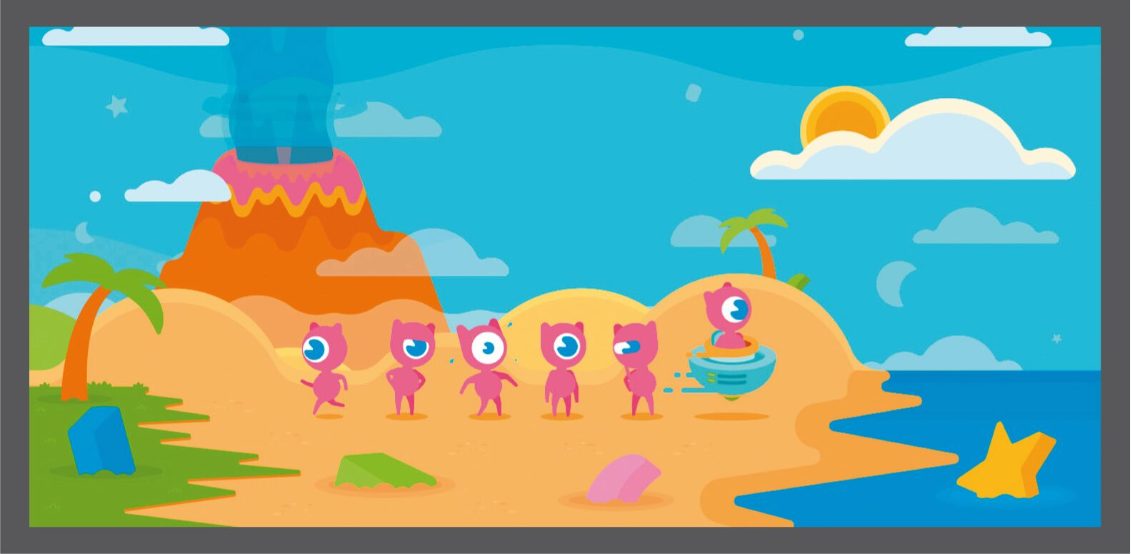- COVID-19
- Biosimilars
- Cataract Therapeutics
- DME
- Gene Therapy
- Workplace
- Ptosis
- Optic Relief
- Imaging
- Geographic Atrophy
- AMD
- Presbyopia
- Ocular Surface Disease
- Practice Management
- Pediatrics
- Surgery
- Therapeutics
- Optometry
- Retina
- Cataract
- Pharmacy
- IOL
- Dry Eye
- Understanding Antibiotic Resistance
- Refractive
- Cornea
- Glaucoma
- OCT
- Ocular Allergy
- Clinical Diagnosis
- Technology
Game on: The technology designed to improve visual search ability
Video game helps youth with cerebral visual impairment

A new browser-based video game called Eyelander aims to promote compensatory strategies of functional vision in young people with cerebral visual impairment.
In the quest to help children with visual field loss caused by cerebral visual impairment, researchers in the United Kingdom have designed the game Eyelander.
The game uses the same concepts applied in adult stroke patients with hemianopia, said Jonathan Waddington, PhD, a computational neuroscientist for WESC Foundation in Exeter, United Kingdom. WESC Foundation is a specialist school for visually impaired children.
“We wanted to investigate whether these training programs could benefit children and young people,” said Dr. Waddington, who designed the game along with Timothy Hodgson, professor of cognitive neuroscience, School of Psychology, University of Lincoln, Lincoln, UK.
The game was developed by the University of Lincoln and WESC Foundation. The game developers knew they had to design something that would be more engaging for young users. They point out that existing training programs often are in black and white and have limited interaction.
“The aim of the game is to offer a colorful, engaging ‘training’ through playing the computer game-an activity which is often not viable for children with functional vision problems because of complications viewing screen graphics,” according to a statement from the University of Lincoln.
Users must find the correct shape of a certain color among a range of competing colors and shapes; the shapes are in different positions on the screen and are led by an animated avatar. One example: Players must find the orange circle that is not flashing on a screen that shows several green squares and one orange circle, all against a black background. Players receive verbal encouragement as they select the correct shape.
Game developers worked with students who have visual impairments and therapists at WESC to develop a training program that would maximize accessibility and engagement.
“The core principles of visual search training are still evident when playing Eyelander, but they are couched in game elements such as progress mechanics, simple aesthetics, narrative, and music,” Dr. Waddington said.
Users of Eyelander (available at eyelander.co.uk) are younger people with hemianopia as well as other forms of visual field loss caused by brain injury and brain dysfunction, Dr. Waddington said.
“It is too early to say whether Eyelander could be helpful for people with other visual impairments, but investigations in this area are ongoing,” he said.
The statement estimates that there are 25,800 blind and partially-sighted children in the U.K. and that cerebral visual impairment is the most common cause of blindness and visual impairment in the U.K. and other developed countries.
How the game may help
Playing Eyelander may not improve visual function itself, but it does have other benefits.
“Eyelander is designed to promote compensatory strategies that could improve functional vision,” Dr. Waddington said.
“We don’t expect training with Eyelander to improve the area of the visual field itself. Instead, we expect changes in visual attention and eye movements to compensate for the visual field loss.”
Dr. Waddington gives a task-specific example.
“Training that improves the small stepwise eye movements required for reading is unlikely to transfer to improvements in mobility and vice versa. The training that Eyelander provides is designed to improve visual search ability, such as the ability to find objects in a cluttered environment,” he explained.
To be effective, Eyelander’s pilot study determined that users should complete 6 to 10 hours of training total over a 4-week period.
“Training effects appear to plateau beyond this point but are maintained for a period of at least 1 month after training has stopped,” Dr. Waddington said.
Adults with hemianopia and visual field loss may find benefits from Eyelander if they are interested in a gamified version of the typical training programs.
Andrew G. Lee, MD, professor of ophthalmology, neurology, and neurosurgery, Institute for Academic Medicine, and chairman, Blanton Eye Institute, Houston Methodist Hospital, Houston, believes that video games such as Eyelander are a reasonable way to help visual function and to engage patients with visual field defects. However, keeping users-especially children-interested in such a game is crucial.
“Motivation is a key to sustainability and gamifying the rehab effort is an interesting strategy for kids, especially in this high-tech, wired environment. The drawbacks are the same for any video game format in terms of time, attention, and prioritization,” Dr. Lee said.
Study results
Results from a pilot study of Eyelander are expected to be published in the Journal of Visual Impairment and Blindness soon.
A formal randomized controlled trial is still needed, Dr. Waddington said.
Dr. Lee would like to see a randomized, double-masked, placebo-controlled trial with Eyelander that has hard metrics and primary visual endpoints. With a parent’s permission, data can be collected from current Eyelander users to help inform the design of a randomized controlled trial, Dr. Waddington said.
Also, children at the WESC Foundation are playing the game, which will help researchers gather more data. More games similar to Eyelander will likely be developed in the future, Dr. Lee believes.
Disclosures:
Jonathan Waddington, PhD
E: JWaddington@wescfoundation.ac.uk
Dr. Waddington is one of the developers of Eyelander.
Andrew G. Lee, MD
E: AGLee@houstonmethodist.org
Dr. Lee has no related disclosures.
